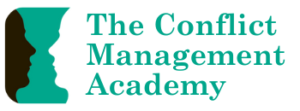The Righteous Mind: Why good people are divided by politics and religion – by Jonathan Haidt
This book was written in 2012, but I recently re-read it and found that it still applies beautifully to the current political drama playing out in the US at the moment and the challenges of COVID.
Haidt explores why humans are so easily divided into hostile groups, each one certain of its righteousness. He explains that the human mind is intrinsically moralistic, critical and judgmental. We are basically hard-wired to engage in conflict, both as individuals and in groups. This book examines how our moral values create and contribute to those conflicts.
Haidt identifies six moral foundations that drive our beliefs and actions (as well as our political and religious alignments):
– Care/harm
– Fairness/cheating
– Loyalty/betrayal
– Authority/subversion
– Sanctity/degradation
– Liberty/oppression
He shows how different groups prioritize and interpret these moral foundations in different ways. For example, he argues that the left side of politics relies primarily on the care/harm foundation, and also liberty/oppression and fairness/cheating (although the left may sacrifice fairness to support the care of others). In contrast, he says that the right uses all six (although the right may sacrifice care to promote the other foundations).
Haidt suggests that the left promotes care and avoidance of harm in a generalized way (equality, social justice, protect those less fortunate in other countries) whereas the right promotes care for those who are part of their group (care blended with loyalty, in which you protect your own before others).
Haidt says that while everyone cares about fairness, there are two ways that might be perceived. On the left, fairness often implies equality (e.g. protecting the poor from being exploited by the rich, ensuring everyone has access to food and healthcare) but on the right it means proportionality (e.g. people should be rewarded in proportion to what they contribute, only people who pay taxes should get the benefit of taxpayer funded services).
Another fascinating example that Haidt provides is the moral foundation of sanctity. He describes how the right tend to talk about the sanctity of life (i.e. anti-abortion) and the sanctity of marriage) whereas the left use sanctity as a basis for promoting things like organic food and environmental concerns. Both are concerned about the sanctity of the human body, but are focused on different ways of promoting that.
He also shows how morality can change. For example, in the past 50 years people in many Western societies have come to feel compassion in response to many more kinds of animal suffering, and they’ve come to feel disgust in response to many fewer kinds of sexual activity.
While Haidt is talking about large scale group conflict between political and religious groups, his moral foundations can also help explain conflict between individuals. Much of our conflict arises when someone challenges something that we value. Understanding that people have different values, or different ways of expressing values, helps us better manage those conflicts (and perhaps, live with the fact that they may never be resolved).
Haidt explains that the more you argue logic to someone who has made a moral choice in one direction, the more you will make them defensive and stronger in their choice. He also argues that making the right moral choice is not something that is based on a person’s level of intelligence. Just because you are smart doesn’t mean you are more likely to make the right moral choice. In fact, it might work against you! Smart people are simply better at arguing to support their own case than in exploring the entire issue more fully and evenhandedly.

